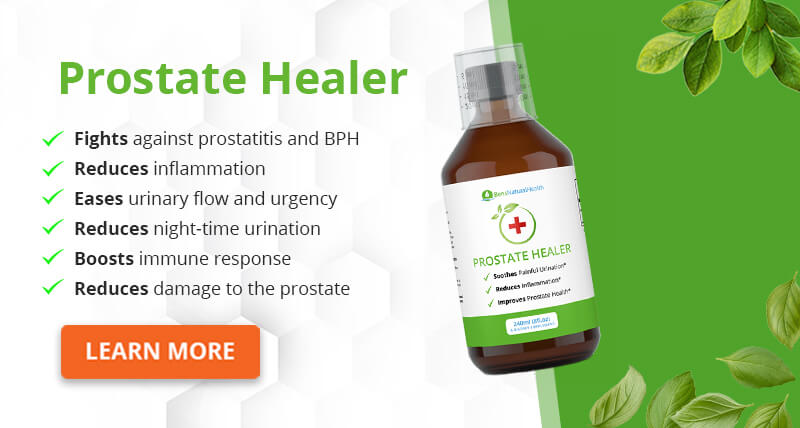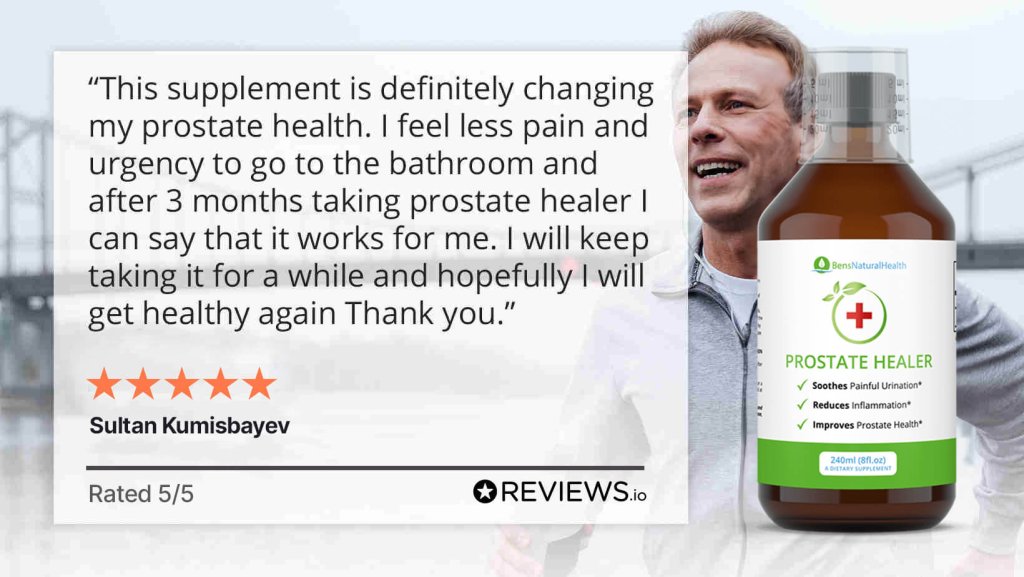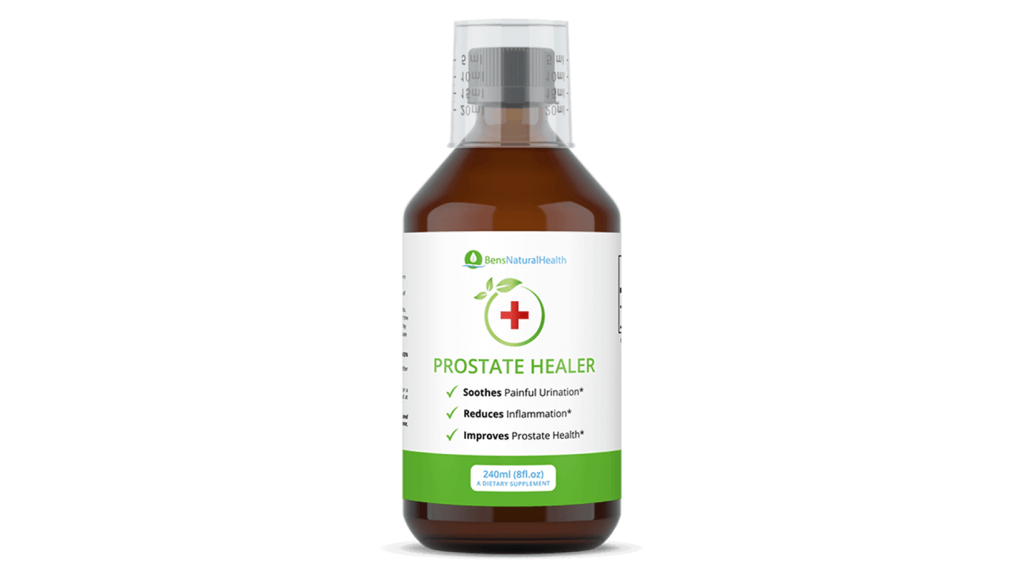- Q: What is Prostatitis?
- Q: What are the Different Types of Prostatitis?
- Q: What are the Treatment Options for Prostatitis?
- Q: Can Prostatitis Be Cured?
- Q: Can Prostatitis Be Cured Naturally?
- Q: How Long Does It Take for Prostatitis to Clear Up?
- Top Patient Questions: Can Prostatitis Be Cured?
- Conclusion
- Our Medical Review Process
- Medical Disclaimer
- Source
If you’ve been struggling with prostate pain or prostatodynia, you may wonder: is prostatitis curable? Prostatitis is a common condition affecting the prostate gland, often causing discomfort and significantly impacting quality of life.
We spoke with Dr. Parra, a leading urologist specializing in prostate health, to understand prostatitis, its different types, and the available treatment options. Throughout the discussion, Dr. Parra provided expert insights and shared evidence-based strategies for managing prostatitis effectively.
Additionally, this article references a study conducted by Dr. Parra, offering deeper insights into prostatitis treatment.
Q: What is Prostatitis?
Dr. Parra answers: Prostatitis is an inflammatory condition affecting the prostate gland. Unlike benign prostatic hyperplasia (BPH) or prostate cancer, prostatitis is more common in younger men and often results from an infection.
In most cases, bacterial infections trigger the inflammation, though other causes such as viral or fungal infections can also be responsible. In rare instances, prostatitis may develop due to an unknown or difficult-to-trace agent. If symptoms persist for over three months, it is classified as chronic prostatitis.
Patients with prostatitis often experience intense pain in the groin area. The condition can also present with fever, chills, and a general feeling of being unwell. While sexually transmitted infections (STIs) like gonorrhea and chlamydia are common culprits, prostatitis it is not considered a sexually-transmitted disease, and prostatitis prevention goes beyond avoiding STIs.
Other risk factors include the use of urinary catheters, primary voiding dysfunction, and underlying conditions such as sarcoidosis. In some cases, as research shows, chronic prostatitis can also be due to ejaculatory duct obstruction, which is associated with the formation of prostate stones or calculi that obstruct prostate fluid.

Q: What are the Different Types of Prostatitis?
Dr. Parra answers: Prostatitis is sometimes not very noticeable and causes mild pain or discomfort. In other cases, as the study suggests, it leads to more severe pain but is limited to a very short period.
However, some patients experience long-standing symptoms that affect their quality of life for an extended period. That’s why we talk about different types of prostatitis. According to research, they include:
Acute Bacterial Prostatitis
This is a bacterial infection of the prostate that triggers acute symptoms. Symptoms of acute prostatitis are usually more severe, but it is limited to a short period and not recurrent once it is treated and cured.
Chronic Bacterial Prostatitis
This bacterial infection causes significant pain and discomfort. An infection of the prostate gland usually triggers it, but once it is apparently solved, the symptoms become recurrent.
When symptoms return or keep bothering patients within three months, we’re talking about chronic bacterial prostatitis.
Chronic Pelvic Pain Syndrome
This condition causes constant pain in the lower back and pelvis. It is not well understood, and the causes are difficult to trace. This prostatitis is usually not infectious, and antibiotics are probably not helping relieve the pain in any way.
Thus, treating this type of prostatitis can sometimes be difficult because it does not respond to the usual treatment.
Your healthcare provider needs to try different options until they find one that suits the patient. It is a more complex problem that compromises the patient’s health and quality of life.
Asymptomatic Inflammatory Prostatitis
An impressive number of males have prostatic inflammation without realizing it. This is known as asymptomatic inflammatory prostatitis. It is usually found incidentally when examining the prostate for another condition.
There’s no consensus about treating asymptomatic inflammatory prostatitis or not because it doesn’t give out symptoms but may increase the risk of prostate cancer.
Q: What are the Treatment Options for Prostatitis?
Dr. Parra answers: Treatment for prostatitis varies depending on the type and severity of the condition. Based on the research, the most common approaches include:
- Urinary Analgesics: Pain management is a key part of prostatitis treatment. Urinary analgesics like phenazopyridine and flavoxate help relieve pain and burning sensations associated with prostate inflammation.
- Antibiotics: For bacterial prostatitis, antibiotics are the primary treatment option. Commonly prescribed antibiotics include fluoroquinolones, macrolides, doxycycline, and tetracyclines.
- Alpha-Blockers: Medications like tamsulosin are often used to relax the smooth muscles of the bladder, improving urinary flow and reducing discomfort in both prostatitis and benign prostatic hyperplasia (BPH).
- Anticholinergic Drugs: These medications target the nervous system to decrease bladder sensitivity. As the study confirms, They are primarily used for nonbacterial chronic prostatitis, though their effectiveness varies from patient to patient.
- Transurethral Microwave Thermotherapy: In cases of chronic bacterial prostatitis that do not respond to conventional treatments, surgical procedures such as transurethral microwave thermotherapy may be recommended. This technique involves heating the prostate gland to reduce inflammation and symptoms.
Q: Can Prostatitis Be Cured?
Dr. Parra answers: Many forms of prostatitis can be cured, particularly when the underlying cause is identified. However, in other cases, the reason is difficult to trace. Thus, the only treatment available is symptomatic and aimed at reducing flare-ups.
Bacterial prostatitis, whether acute or chronic, is generally treatable with antibiotics. However, chronic pelvic pain syndrome can be more challenging to manage, as its exact causes are not well understood. For some patients, long-term symptom relief requires a trial-and-error approach with different treatment strategies.
While not every case of prostatitis has a definitive cure, proper medical care can significantly improve symptoms and quality of life.
Q: How Can Bacterial Prostatitis Be Cured?
Dr. Parra answers: Bacterial prostatitis is an infection caused by microorganisms such as Escherichia coli, a bacteria responsible for around 80% of cases, according to studies. It is a genitourinary infection, and it is treated similarly to UTIs. In most cases, bacterial prostatitis can be cured by choosing the appropriate antibacterial treatment and adhering to the treatment course the doctor prescribes. For many years, the most common antibiotic to treat these problems are fluoroquinolones, and the treatment takes one week to complete in acute prostatitis.
In their published articles, different authors compare the treatment of prostatitis to that of urinary tract infections. In both cases, conditions are treated with the appropriate antibiotic course, which usually takes a similar period to cure. However, there is a type of prostatitis that does not respond to a short antibiotic course and may require more prolonged treatment. Even so, chronic prostatitis can sometimes be challenging to manage, even when a bacterial agent has been detected in the seminal fluid.

Q: How Can Chronic Bacterial Prostatitis Be Cured?
Dr. Parra answers: Chronic bacterial prostatitis is similar to acute prostatitis and can be cured. However, it usually takes longer, and some patients may experience a relapse or recurrence of symptoms. In this regard, chronic bacterial prostatitis is similar to chronic UTIs. They are both more challenging to cure compared to the acute modality but respond to antibiotic therapy combined with anti-inflammatory treatment to control the symptoms.
Recent literature reviews about bacterial prostatitis confirm that the treatment protocol is similar to that for acute prostatitis. However, instead of one week of antibiotics, patients must undergo at least four weeks and continue their treatment even if their symptoms are gone. The maximum length of antibiotic treatment is 12 weeks, and it is usually reserved for patients with multiple relapses and a history of failed antibiotic treatments.
It is essential to differentiate between chronic bacterial prostatitis and chronic prostatitis/chronic pelvic pain syndrome. The latter is usually not linked to a bacterial infection or has multiple etiologies with a long-term treatment. Patients with chronic pelvic pain syndrome often experience improvements and relapses throughout their lifetime, and finding a definite cure is not always possible. But when a specific bacterial agent is the cause of prostatitis, the problem can be resolved with the appropriate antibiotic therapy.
Q: Can Prostatitis Be Cured Naturally?
Dr. Parra answers: Not all prostatitis cases require antibiotics. If no bacterial infection is present, alternative treatments may be more effective. Some natural remedies that have shown promise include:
Saw Palmetto
Saw palmetto is a widely used herbal supplement that helps relieve symptoms of prostatitis and BPH. According to the research, it has both anti-inflammatory and antiproliferative effects on the prostate, reducing irritation and discomfort.
Quercetin
Quercetin, a flavonoid found in many fruits and vegetables, has been studied for its potential benefits in prostatitis management. Research suggests that it may help alleviate symptoms in some patients.
Pollen Extracts
Research showed that certain pollen extracts have been found to provide relief from prostatitis symptoms by reducing inflammation and improving prostate function.
Ben’s Natural Prostatitis Treatment: Prostate Healer
We formulated Prostate Healer to effectively combat prostatitis and BPH, protect bladder health, and provide symptomatic relief from urinary tract infections, urgency, frequency, and nocturia.
Prostate Healer is a blend of modern science and holistic healing. We’ve taken a 5,000 year old Ayurvedic recipe for prostate health and made it available for the men of today.
It works on the prostate, kidney, and bladder simultaneously, coaxing cells gently to resume normal function. So, by this action, you’re fighting against prostatitis and BPH.
If you’re like many men that use the formula, you’ll see a reduction in the number of times you get up to go to the bathroom to urinate. Plus, you’ll see an improvement in the flow of your urine.

Q: Can Prostatitis Be Cured on Its Own?
Dr. Parra answers: Most diseases cannot be cured on their own, especially if they have a specific cause, such as a bacterial infection. However, in some cases, patients may experience a symptomatic improvement, even if they are not taking any medications. Thus, we should not avoid treating conditions such as acute and chronic bacterial prostatitis. Spontaneous clearance of the bacterial agent is highly uncommon, and it is more likely that acute prostatitis will become chronic and require a longer and more complex treatment course in the future.
However, there are other types of prostatitis without a clear cause, such as chronic prostatitis/chronic pelvic pain syndrome. This condition usually has no unique and specific reason, and it is more challenging for patients and their doctors. Pain may arise spontaneously and resolve on its own in flare-up and resolution periods that do not always depend on taking medications.Asymptomatic prostatitis is another condition that patients usually take for granted. Patients with asymptomatic prostatitis may not search for medical treatment because they do not have any symptoms in the first place. But even if there’s no change in how they feel, studies show that prostatitis, even in asymptomatic episodes, can increase the risk of prostate cancer. Thus, we recommend using anti-inflammatory medications or herbal supplements along with medical treatment to reduce the risk.
Q: How Long Does It Take for Prostatitis to Clear Up?
Dr. Parra answers: The duration of prostatitis treatment depends on the type and severity of the condition.
- Acute bacterial prostatitis often resolves within a few weeks with proper antibiotic treatment.
- Chronic bacterial prostatitis may take longer, sometimes requiring months of treatment to prevent recurrence.
- Chronic pelvic pain syndrome can be more challenging, and symptom management may require ongoing care over a longer period.
Early diagnosis and tailored treatment plans can significantly improve outcomes for patients with prostatitis.
Top Patient Questions: Can Prostatitis Be Cured?
Q: How does the cure rate of prostatitis differ based on its underlying cause?
Dr. Parra answers: The cure rate of prostatitis is highly variable and depends on the cause and how long the patient has been enduring the symptoms. A review in the journal American Family Physician reports that the recovery rate in people with acute bacterial prostatitis is 85%. In cases in which acute bacterial prostatitis does not improve, it usually turns into chronic bacterial prostatitis, which has a highly variable recovery rate of 40-80%, depending on the bacterial agent and the treatment, according to data provided by an article in the Asian Journal of Andrology. However, the recurrence rate of chronic bacterial prostatitis is also high, around 25-50%, according to a review article in Frontier Pharmacology.
When the trigger of prostatitis is not associated with a bacterial infection, the recovery rate is highly variable, and sometimes patients continue having symptoms that come and go in flare-ups and periods of partial recovery for a very long time. This is known as nonbacterial prostatitis or chronic prostatitis/chronic pelvic pain syndrome. Instead of a single condition, it includes a wide array of health problems that trigger a type of pain commonly associated with prostate conditions. However, it can be due to pelvic pain muscle dysfunction, psychological risk factors, and other issues not related to the prostate.
Q: Is there a risk of prostatitis recurring after successful treatment?
Dr. Parra answers: Yes. Depending on the type of prostatitis, there is a risk of recurrence after treatment. The most common relapses happen in patients with chronic bacterial prostatitis and chronic pelvic pain syndrome. Studies show that, even after the symptoms are resolved, patients have a recurrence rate of 25 to 50% in chronic bacterial prostatitis. In other words, after completing their treatment of 4 to 12 weeks, half of patients will experience the same symptoms all over again in the course of a few months or years.
Another article published in American Family Physician reports that patients with acute prostatitis have a lower recurrence rate, around 13%. The prognosis of acute prostatitis is better, but the recurrence rate can be higher if the patient doesn’t complete the treatment course as prescribed by their doctor. In such cases, patients may experience symptoms associated with chronic bacterial prostatitis.
Q: What role does early diagnosis play in the cure potential of prostatitis?
Dr. Parra answers: As with most ailments, early diagnosis can increase the effectiveness of treatment and spare the patient from the most uncomfortable symptoms of prostatitis. This is particularly true of chronic prostatitis, which sometimes has lingering symptoms that might not be severe enough to require immediate medical attention. In contrast, acute prostatitis usually has more severe symptoms, prompting the patient to seek urgent medical attention.
The number of studies on chronic prostatitis is limited, but a recent StatPearls review from the National Library of Medicine explores the topic and mentions that “early recognition and the correct clinical classification of the condition with prompt and appropriate treatment improves outcomes and minimizes patient morbidity.” Thus, it is essential to recognize the disease, classify the type of prostatitis, and start treatment as soon as possible.
In the case of chronic pelvic pain syndrome, this health problem depends on multiple variables. As mentioned above, not all patients find a complete cure, and most undergo treatment to control the symptoms instead of curing the disease. However, the sooner we start treatment, the more likely it will be to achieve a better quality of life and notorious symptomatic improvements.
Q: How does prostatitis treatment effectiveness vary based on age and overall health?
Dr. Parra answers: Prostatitis treatment tends to be more effective in younger patients with better health. The main reason is comorbidity (the existence of multiple health problems at the same time) and polypharmacy (the concurrent use of various medications to control different ailments). Patients in older age are more likely to have multiple health problems that complicate treatment and tend to use multiple medications that interact with prostatitis treatment and have their own side effects.
A recent study published in the Biological and Pharmaceutical Bulletin found that lower urinary tract symptoms exacerbations are more common in patients taking multiple medications. The authors reported that this trend is particularly prevalent in patients taking anticholinergic drugs, such as Diphenhydramine and Doxylamine.
Variations in treatment effectiveness are more common in patients with chronic diseases, such as chronic bacterial prostatitis and chronic prostatitis/chronic pelvic pain syndrome. Multiple risk factors complicate treatment efficacy in these patients, changing the prognosis of the disease. In contrast, acute prostatitis treatment is more straightforward,, and the outcome is more commonly subject to change depending on the patient’s adherence to medical treatment and recommendations.
Q: Are there any lifestyle changes that can help manage and possibly cure prostatitis?
Dr. Parra answers: Lifestyle changes can reduce symptoms and promote a faster recovery, in addition to medical treatment. However, it is not recommended to leave treatment incomplete, as this increases the risk of recurrence and bacteria resistance.
Your healthcare provider will probably recommend a few changes to your diet and lifestyle to improve your symptoms faster. For instance, alcohol and spicy foods can aggravate lower urinary tract symptoms in patients with prostate conditions. It is also recommended that you reduce your dairy consumption and avoid coffee and other sources of caffeine. However, some studies show diverging results, suggesting that caffeine could help reduce lower urinary tract symptoms in some patients.
Instead, urologists recommend consuming more tomatoes, as they contain a high level of lycopene, an antioxidant that reaches the prostate and protects its structure from free radicals. Lycopene can also be obtained from herbal remedies and natural supplements. Zinc in nuts and sulforaphane in cruciferous vegetables can also help accelerate recovery.
Managing stress and learning to cope with adversity is also an important step towards recovery, especially if you have chronic pelvic pain syndrome or another type of chronic prostatitis. Additionally, it is essential to maintain good hygiene and protect yourself from urinary tract infections and sexually transmitted diseases, as studies show they increase the risk of getting prostatitis.
Conclusion
So, is prostatitis curable? The answer depends on the type and severity of the condition. Bacterial prostatitis is often curable with the right antibiotics, while chronic non-bacterial prostatitis may require long-term management through lifestyle changes, physical therapy, and medication.
With early diagnosis and a tailored treatment plan, many men experience significant relief from symptoms. If you’re dealing with prostatitis, consult a healthcare professional to explore the best options for your recovery.
Our Medical Review Process
At Ben’s Natural Health, we are committed to maintaining the highest standards of accuracy, transparency, and scientific integrity. Our content is developed by medical professionals and undergoes a thorough review every 12 to 24 months. This rigorous process ensures that our information stays current, precise, and based on credible, evidence-based research. We rely solely on peer-reviewed studies from reputable medical journals, providing full citations and direct links to reinforce trust and confidence. Learn more about our medical review process
and research standards.
Our Editorial Guidelines
For over 25 years, Ben’s Natural Health has been a trusted source for reliable, scientifically-backed information on natural health. Our editorial guidelines are crafted to guarantee the quality and integrity of every article we publish. Each piece is written by qualified professionals, including doctors, dietitians, nutritionists, fitness experts, and surgeons, and undergoes independent quality checks. We prioritize transparency by showcasing the credentials and biographies of our contributors at the beginning of each article. Discover more about how we create and fact-check our content by reading our editorial guidelines.
Medical Disclaimer
The information provided on this blog is for informational purposes only and should not be considered a substitute for professional medical advice, diagnosis, or treatment. While our articles are written and reviewed by licensed medical professionals, they may not address your individual health concerns. Always consult with your primary care physician or a qualified healthcare provider before making decisions regarding your health. Never disregard or delay seeking professional medical advice based on the content provided here. Your use of this blog and its content is at your own risk.





